Deportes electrónicos
El impacto de las ligas regionales en el crecimiento global de los eSports
Las ligas regionales de deportes electrónicos generan un crecimiento poderoso en los deportes electrónicos globales al desarrollar nuevos talentos en juegos móviles, involucrar a las comunidades e impulsar la innovación en todos los niveles de juego.
Anuncios
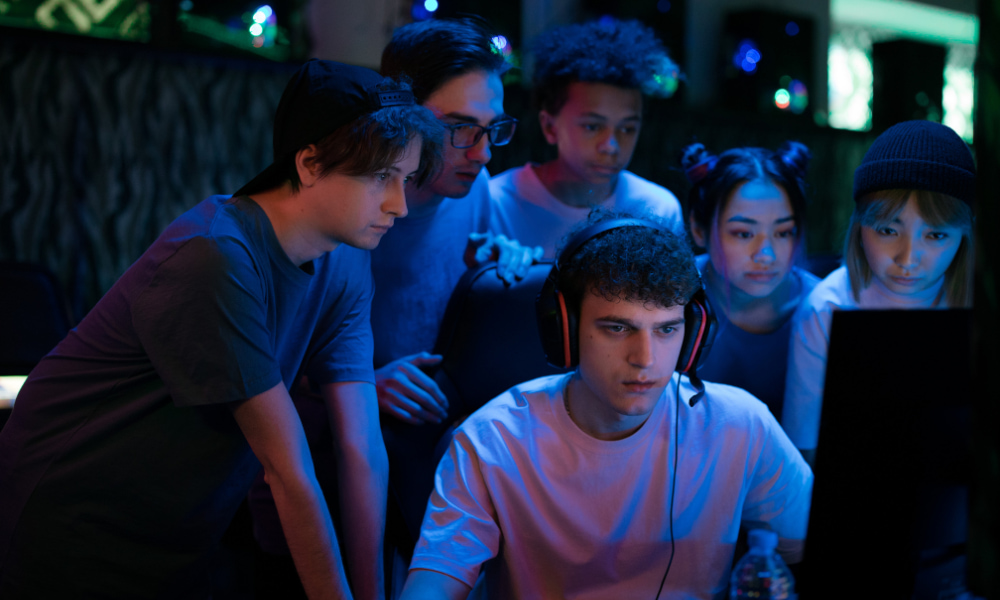
Ver eSports se ha vuelto tan emocionante como seguir las ligas profesionales de deportes tradicionales. Las sorpresas de mitad de temporada y las estrellas emergentes generan mucha expectación, especialmente cuando las ligas regionales de esports locales catapultan a equipos desconocidos al estrellato. Su influencia se extiende mucho más allá de su territorio.
Los juegos móviles y títulos como Free Fire o PUBG muestran cómo las ligas globales y regionales de esports impulsan nuevos talentos, elevan el nivel de competencia y definen las expectativas de los aficionados. Este artículo explora cómo estas ligas impulsan el crecimiento mundial y transforman el panorama de los juegos móviles para todos los involucrados.
Si alguna vez te has preguntado por qué algunos países dominan los eSports o cómo las ligas locales pueden revolucionar las clasificaciones mundiales, quédate. Las siguientes secciones ofrecen respuestas detalladas, ejemplos prácticos y consejos exclusivos para el fenómeno de las ligas regionales de esports en juegos móviles y más allá.
Desarrollando el talento de base: las ligas regionales ofrecen un camino claro
Al crear oportunidades para los jugadores aspirantes, las ligas regionales de esports refuerzan una cultura de desarrollo de habilidades desde la base. Estas ligas se convierten en trampolines naturales para el talento local que busca un escenario más amplio, especialmente en juegos móviles, donde la accesibilidad es clave.
A diferencia de las clasificatorias online puntuales, una liga regional de esports estructurada permite a los jugadores competir con regularidad, ganar confianza y adaptarse a estrategias cambiantes. Este entorno más estable genera un crecimiento visible, justo el camino que muchos jugadores necesitan.
El papel de los eventos comunitarios locales en el desarrollo de habilidades
Imagina a un grupo de amigos en Dallas inscribiéndose en una liga semanal de juegos móviles. Su comunicación se agudiza, sus tácticas se perfeccionan y su familiaridad con las reglas del torneo crece semana tras semana. Pronto, usan señales con las manos como si fueran equipos veteranos.
Esta progresión en la vida real demuestra la importancia de las ligas regionales de esports: ofrecen retroalimentación continua, competencia directa y lecciones inmediatas para cualquier grupo de edad. Con cada partido, los jugadores no solo mejoran, sino que también se involucran más en su carrera como jugadores.
Al igual que en el béisbol de ligas menores, la repetición y la retroalimentación en estos entornos específicos aceleran el desarrollo de los jugadores. Cualquiera que se una a estas ligas tiene una forma directa y asequible de mejorar sus habilidades. Esto invita a una mayor diversidad de trasfondos y estilos de juego a la escena global.
Avanzando: Las finales regionales como plataforma de lanzamiento
Un equipo de Texas gana una liga regional de eSports para móviles y luego avanza a un torneo nacional. El capitán del equipo dice: «Practicamos juntos durante meses, enfrentándonos a mejores rivales cada semana. Ahora sabemos cómo superar los nervios». Esta experiencia fortalece la confianza y afina la estrategia.
Las finales regionales suponen mucha más presión que las finales locales. A medida que el público se hace más ruidoso, los jugadores deben poner a prueba su resiliencia, rapidez mental y aplomo. Solo estas condiciones reflejan lo que enfrentarán a nivel internacional.
Jugar bajo estos focos enseña a gestionar el tiempo y a autodisciplina entre partidos. El éxito no es casualidad: los jugadores se basan en los hábitos adquiridos en ligas menores para afrontar los escenarios más importantes del mundo.
| Tipo de liga | Beneficio clave | Formato del juego | Próximo paso para los jugadores |
|---|---|---|---|
| Liga Móvil Local | Accesibilidad, Práctica Temprana | MOBA móvil 5v5 | Desarrollar la química del equipo |
| Liga Estatal | Juego regular de alto nivel | Mezcla en línea/fuera de línea | Detectar estrellas emergentes |
| Finales regionales | Gran competencia | Formato Bo3 o Bo5 | Avanzar a nivel nacional |
| Liga Nacional | Reconocimiento nacional | Eventos en vivo, transmisión | Invitación a Internacionales |
| Torneo Internacional | Exposición global | Multinacional | Contratos de deportes electrónicos profesionales |
Ampliación de las bases de aficionados locales: las ligas fomentan la participación comunitaria
Las ligas regionales de esports no solo fomentan el talento, sino que también fomentan el orgullo local y unen a las comunidades. Los aficionados se unen a sus héroes locales semana tras semana, lo que otorga a los esports un carácter personal y cercano que falta en las finales mundiales distantes.
Las ligas ayudan a los desarrolladores de juegos móviles y a los organizadores de torneos a rastrear lo que más entusiasma a los aficionados en las calles. Esa información define los eventos, las recompensas e incluso los propios juegos. En resumen, las ligas locales convierten a los jugadores en comunidades reales.
Fomentar un sistema de apoyo sostenible
Los aficionados visten las camisetas de sus equipos, crean cánticos y celebran fiestas en sus cafeterías favoritas. El sentimiento de pertenencia se fortalece con cada partido. El orgullo local se convierte en un factor clave para el éxito continuo de las ligas regionales de esports.
Los jugadores perciben el apoyo y se nutren de su energía. Firman autógrafos, se unen a reuniones posteriores a los partidos y responden preguntas directas sobre estrategia o sus héroes favoritos. Los aficionados se sienten escuchados y valorados, lo que añade un nivel adicional de lealtad.
- Organice visualizaciones públicas para llegar a nuevas audiencias: la transmisión de juegos en puntos de acceso locales alienta a los espectadores primerizos a unirse, ver la emoción y preguntar sobre los próximos partidos.
- Ofrezca productos con la marca del equipo para construir la identidad: los fanáticos obtienen recuerdos prácticos y, al mismo tiempo, brindan a los equipos respaldo financiero adicional para viajes o actualizaciones de equipamiento.
- Organiza sesiones de preguntas y respuestas con los jugadores después de cada partido: los niños se inspiran cara a cara y los padres ven el lado social de los deportes electrónicos de primera mano en estas reuniones.
- Crea videos destacados para compartir en redes sociales: los fanáticos reviven sus momentos favoritos, difunden entusiasmo y ayudan a las ligas a ganar visibilidad tanto en dispositivos móviles como de escritorio.
- Promover roles de voluntariado para eventos locales: los equipos organizadores mantienen los partidos funcionando sin problemas, mientras que los voluntarios construyen amistades y adquieren experiencia profesional en eventos.
Cada una de estas acciones refuerza las raíces de la comunidad y hace de cada evento local de eSports una verdadera experiencia, no solo una noche de juegos.
Empoderando a los socios locales para el crecimiento
Las ligas regionales de esports generan nuevas oportunidades de patrocinio, visibilidad de marcas locales y demanda de personal cualificado para eventos. Las ciudades experimentan un impacto económico positivo, con impulsos recurrentes en los sectores de la hostelería, el comercio minorista y la tecnología cada temporada.
Las empresas aprenden a invertir en equipos o ligas locales, ofreciendo premios u organizando eventos. Este ciclo aumenta la confianza en los eSports como un mercado fiable, impulsando aún más la innovación.
- Lanzar programas de patrocinio locales para brindar acceso a las marcas: las empresas apoyan a los equipos locales y ven un compromiso medido, creando alcance regional a través de logotipos en transmisiones o productos promocionales.
- Incentive a las escuelas a organizar ligas extraescolares: introducir los juegos a una edad temprana fomenta hábitos seguros y estructurados, a la vez que crea futuros voluntarios o entrenadores para eventos.
- Conecte a los desarrolladores con los organizadores locales: ajuste las reglas del torneo en función de los aportes de la comunidad, garantizando que cada región se sienta valorada y escuchada durante la planificación del evento.
- Ofrecer programas de pasantías en gestión de eventos: brindar aprendizaje práctico para estudiantes de secundaria o universitarios, fortaleciendo la reserva de talentos locales para trabajos en tecnología y eventos.
- Publicitar noticias de la liga a través de los canales de medios locales: la cobertura garantiza la legitimidad de los eSports y presenta los partidos a un público más amplio, lo que genera mayores descargas y participación en los juegos.
Cada asociación refuerza el ecosistema de la liga regional de deportes electrónicos y amplifica las ventajas para todos los involucrados.
Lograr la paridad competitiva: las ligas mejoran el juego global
Jugadores de regiones subrepresentadas pueden sorprender a los favoritos internacionales gracias a un riguroso entrenamiento en ligas regionales de esports. La constancia en los partidos revela al próximo prodigio o equipo listo para revolucionar las clasificaciones tradicionales.
Esta dinámica mantiene los torneos globales de eSports frescos y competitivos, lo que demuestra que las ligas locales pueden tener un impacto directo en los campeonatos mundiales de juegos como Mobile Legends o Call of Duty: Mobile.
Equilibrar los metacambios entre regiones
Los equipos de las ligas regionales de esports del sudeste asiático pueden apoyarse fuertemente en héroes asesinos de ritmo rápido, mientras que las ligas norteamericanas priorizan el juego de tanques. Estas metas contrastantes se cruzan en eventos globales, obligando a los equipos a adaptarse o arriesgarse a la derrota.
La exposición a tácticas desconocidas es invaluable. Un entrenador podría decir: "Practiquemos la estrategia de empuje dividido de la región SEA; si la dominamos, podemos dar la sorpresa en la siguiente fase". Cuanto más variadas sean las ligas, más innovadora será la dinámica global.
La continua evolución en los estilos de juego y la selección de héroes mantiene la imprevisibilidad de los torneos. Esta variedad es consecuencia directa de las sólidas ligas regionales de esports que aportan nuevos enfoques al panorama internacional cada temporada.
Destacando a los prodigios emergentes
Las plataformas de streaming presentan regularmente las mejores jugadas de las ligas regionales. Un francotirador novato de Sudamérica conecta disparos a la cabeza que nadie esperaba; los comentaristas comentan de inmediato: «Este jugador podría ser la estrella mundial el próximo mes». Sus hazañas locales se viralizan, lo que lleva a que las grandes potencias mundiales los contraten.
Este ciclo aumenta la visibilidad de talentos poco conocidos, acelerando el desarrollo y la exposición de los jugadores. Cuando se les pregunta, las nuevas estrellas suelen atribuir su éxito a la intensidad de los partidos de liga y a la diversidad de su escena local.
Los espectadores ahora exploran ligas de todo el mundo en busca de joyas ocultas, no solo de los equipos más destacados. El reclutamiento y las recompensas globales se vuelven más democráticos gracias al alcance de las ligas regionales de esports.
Estableciendo trayectorias profesionales: las ligas ofrecen seguridad laboral
Los calendarios de liga consistentes (partidos semanales, compromisos con patrocinadores y entrevistas con la prensa local) aportan estabilidad a la vida de un jugador. Las ligas regionales de esports convierten las inciertas oportunidades laborales secundarias en carreras profesionales estructuradas.
A medida que las ligas maduran, surgen roles más allá del jugador o el entrenador. Los organizadores de eventos, comentaristas, analistas y personal de producción consideran el trabajo estable como parte integral de la creciente escena.
Desarrollo profesional a través de competencia regular
Los jugadores de las ligas regionales de esports siguen rutinas estrictas: llegan ensayados y puntuales, revisan los vídeos después del partido y siguen planes de acondicionamiento físico para prevenir lesiones. Estos hábitos reflejan las expectativas en los deportes tradicionales o en los puestos empresariales.
Los equipos profesionales se benefician porque sus miembros desarrollan no solo habilidades de juego, sino también profesionalismo. Los profesionales dicen: «Tratamos cada partido de liga como un trabajo: establecemos objetivos de equipo y medimos el progreso mensualmente». Esta mentalidad impulsa más patrocinios.
La estructura de la liga implica menos interrupciones en la programación y unos ingresos más estables para todos los participantes. El resultado: menos agotamiento, mejor salud mental y un estilo de vida sostenible en los eSports.
Construyendo carreras técnicas y creativas
Las ligas regionales requieren equipos de producción de video, diseñadores gráficos para redes sociales y organizadores de eventos locales. Los jóvenes talentos en estos puestos de apoyo prueban herramientas mientras crean videos para futuros trabajos.
Los patrocinadores y desarrolladores buscan personas capaces de resolver problemas técnicos y realizar transmisiones en vivo fluidas bajo presión. Estudiantes y freelancers obtienen experiencia directamente transferible a otras carreras en tecnología y medios.
Las ligas regionales de esports permiten a los recién llegados observar a organizadores experimentados y aprender sobre la marcha. Este proceso multiplica la cantidad de expertos capacitados disponibles a medida que el ecosistema de los esports se expande.
Abriendo camino a la innovación: Nuevos formatos dinamizan los deportes electrónicos globales
Formatos adaptables y experimentales debutan en ligas regionales de esports antes de llegar a las finales mundiales. Los desarrolladores de juegos móviles observan cómo se desarrollan las modificaciones específicas de cada región ante el entusiasmo del público local, iterando constantemente para mejorar la experiencia del jugador.
Esta actitud experimental fomenta la creatividad: nuevas reglas de torneo, nuevas rotaciones de mapas o interacciones únicas con los fans. Otras industrias utilizan programas piloto similares para probar nuevos productos; los eSports regionales convierten las pruebas beta en un evento comunitario.
Presentación de sistemas alternativos de puntuación y avance
Una liga móvil norteamericana podría probar un sistema basado en puntos que incluya premios al Jugador Más Valioso (MVP) votados por el público. Los aficionados influyen en los resultados y las ganancias de los jugadores. Los directivos de la liga estudian qué cambios mejoran el juego limpio y la retención, y luego recomiendan ideas prometedoras para su implementación global.
Los sistemas perfeccionados pueden convertirse en elementos distintivos de los principales eventos de eSports a nivel mundial. Los estudios de videojuegos observan mejoras significativas en la participación de los jugadores y en la retroalimentación positiva en todas las regiones.
La innovación en las ligas regionales de deportes electrónicos no ocurre en el vacío: los experimentos exitosos logran una rápida adopción por parte de los torneos internacionales en lugar de demoras de años.
Explorando nuevos formatos para la transmisión y el espectador
Algunas ligas regionales de esports han probado encuestas en vivo basadas en apps, que permiten a los aficionados votar en tiempo real por modificadores sorpresa para los partidos, como mapas renovados, ajustes del clima o potenciadores. La interacción con las transmisiones se duplica en estos momentos, lo que ofrece a los patrocinadores mejores oportunidades para conectar con el público.
Los resultados informan las futuras experiencias de los espectadores, con superposiciones creativas inspiradoras, comentarios en varios idiomas y contenido adaptado a los grupos demográficos más jóvenes. Los aficionados de todas las regiones disfrutan de transmisiones más inclusivas, no solo del estilo de presentación estándar.
Este ciclo de retroalimentación mantiene las transmisiones de eSports frescas e interesantes, y las preferencias regionales influyen en la apariencia de los eventos globales. Las nuevas ideas se convierten en características estándar más rápidamente gracias a la continua innovación local.
Integración de los deportes electrónicos en la educación y la divulgación juvenil
Los organizadores con visión de futuro utilizan ligas regionales de esports para incorporar liderazgo, trabajo en equipo y habilidades tecnológicas en los programas escolares. Los clubes de videojuegos móviles, los torneos extraescolares y los campamentos de verano exponen a los niños a una sana competencia en un entorno seguro y de apoyo.
Profesores y padres reportan resultados positivos: los estudiantes mejoran la gestión del tiempo, se comunican más directamente y desarrollan resiliencia al reaccionar tanto ante las victorias como ante los reveses en la liga. Este apoyo estructurado ayuda a reducir las preocupaciones sobre el tiempo frente a la pantalla.
Asociaciones académicas y habilidades para la vida
Las escuelas secundarias y universidades se asocian con ligas regionales de esports, lo que les otorga legitimidad y ofrece créditos para graduarse. "Nuestros estudiantes locutores aprendieron tanto a hablar en público en los esports como en el club de debate", afirma un entrenador, enfatizando las habilidades transferibles.
Los padres se convierten en aliados en lugar de escépticos, asistiendo a los partidos o gestionando las mesas de refrigerio del equipo. La colaboración entre familias y educadores refuerza la imagen positiva de los eSports móviles, convirtiendo las ligas regionales en eventos comunitarios en lugar de actividades aisladas.
Estas colaboraciones generan oportunidades de becas para jugadores móviles, al igual que con otros deportes extracurriculares. Cada vez más estudiantes ven los videojuegos como una oportunidad real y se esfuerzan más para compaginar sus estudios con la formación.
Intervención temprana e inclusión para todos los estudiantes
Algunas ligas priorizan el acceso a programas para niñas y grupos subrepresentados, rompiendo viejos estereotipos sobre quién puede competir o liderar en los eSports móviles. Los modelos a seguir visibles y diversos atraen un mayor interés año tras año.
Los orientadores trabajan con los organizadores de las ligas para establecer estándares académicos de participación, garantizando que el juego nunca se limite al estudio. Este nivel de apoyo crea estudiantes con un rendimiento integral y ligas más sólidas.
Al alinearse con la educación, las ligas regionales de esports fomentan hábitos de vida positivos desde la primaria. Esto se traduce directamente en competidores globales más comprometidos y mejor preparados para futuros torneos.
Dando forma al futuro: Las ligas regionales impulsan el crecimiento duradero de los eSports
Los juegos móviles y las ligas regionales de esports no son solo una moda, sino un pilar permanente de la comunidad global de esports. Cada aficionado entusiasta y cada nuevo profesional fortalece el sistema, y cada nueva colaboración significa mayores posibilidades para todos.
A medida que las ligas regionales evolucionan, se espera ver más innovación, una mayor participación y el surgimiento de nuevos referentes desde lugares inesperados. El camino desde los partidos callejeros hasta los campeonatos es más claro y justo que nunca, sin importar dónde vivas.
Gracias a las ligas regionales de esports, los aspirantes a jugadores y organizadores tienen un plan para convertir sus sueños en realidad, ya sea dirigiendo un campamento juvenil, organizando una final móvil o liderando un movimiento a nivel de ciudad. La próxima superestrella mundial de los esports podría estar entrenando en una liga local cerca de ti ahora mismo.
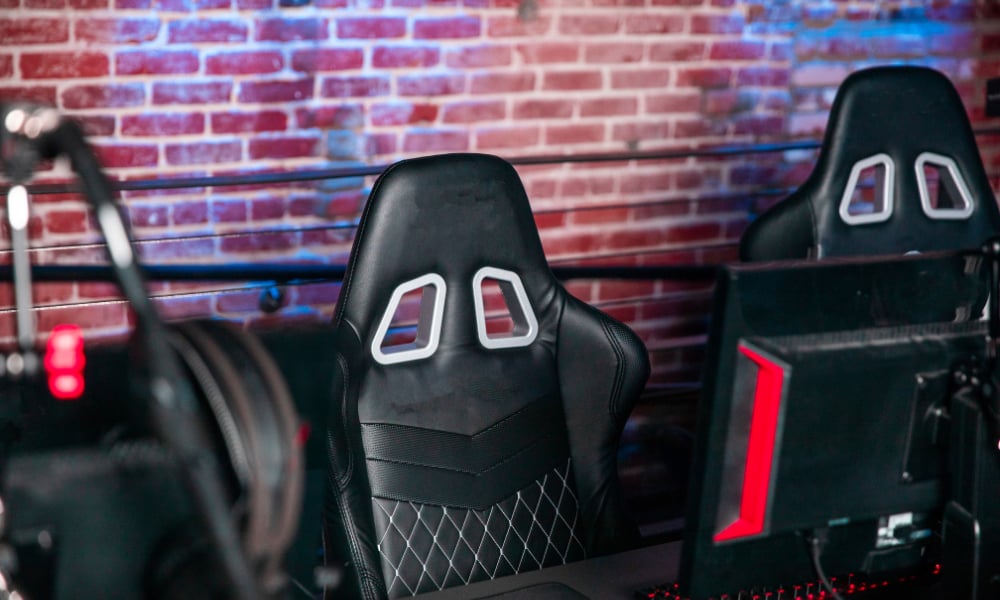
El mejor equipamiento para jugadores de eSports
El equipamiento profesional de eSports mejora la reacción, la comodidad y la concentración: un equipamiento perfeccionado transforma cada partida en una ventaja ganadora constante.
Tendencias

Cómo mantener la concentración durante los torneos de eSports: hábitos de concentración que triunfan
Mejora tu concentración para los torneos de eSports con rituales previos al juego, optimización del entorno y estrategias de comunicación en equipo.
Continúe Leyendo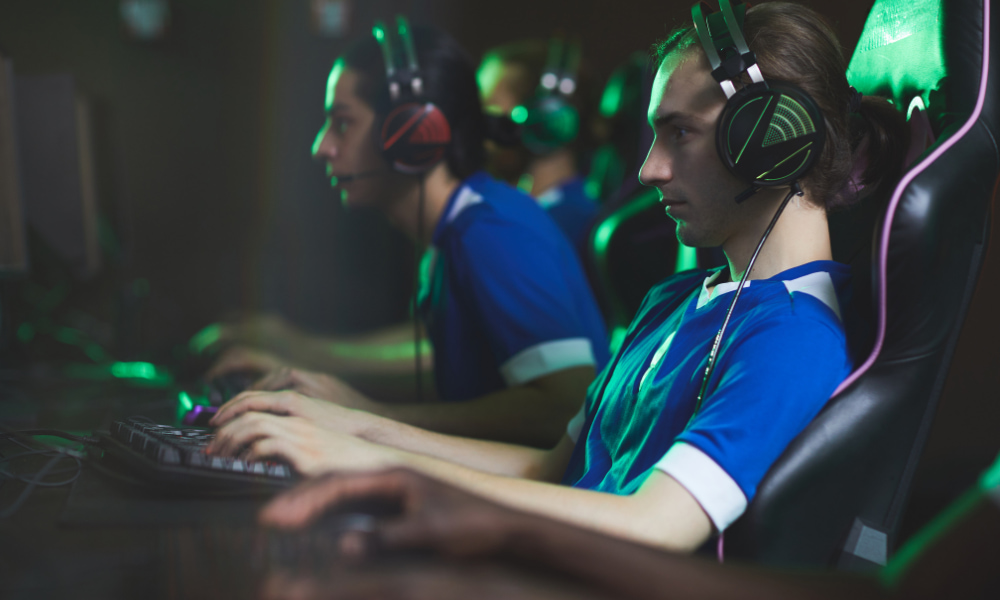
La importancia del entrenamiento mental en el rendimiento en los eSports
El entrenamiento mental en los eSports mejora la concentración, la gestión del estrés y la comunicación en equipo, lo que ayuda a los jugadores móviles a mejorar la consistencia y el rendimiento.
Continúe Leyendo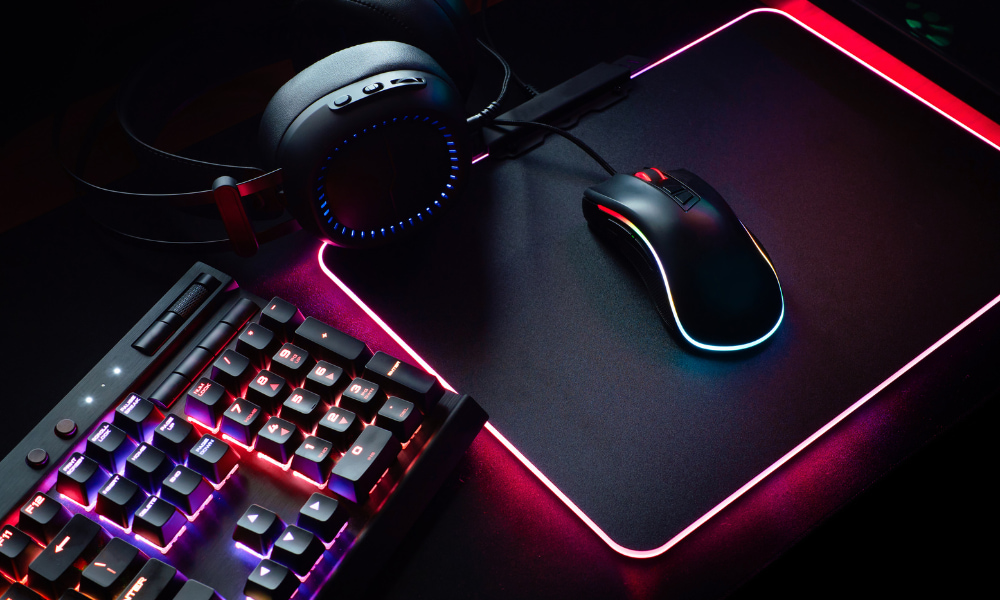
Cómo jugar mejor con el teclado y el ratón: consejos y trucos
Mejore su experiencia de juego con el teclado y el mouse con consejos sobre precisión, combinaciones de teclas personalizadas, ejercicios de reflejos y configuraciones ergonómicas para un mejor rendimiento.
Continúe LeyendoTambién te puede interesar

Los mejores juegos de realidad virtual para jugadores de acción
Explora los mejores juegos de acción de realidad virtual y maximiza tu inmersión con consejos sobre cómo seleccionar títulos, optimizar los controles y mejorar los reflejos.
Continúe Leyendo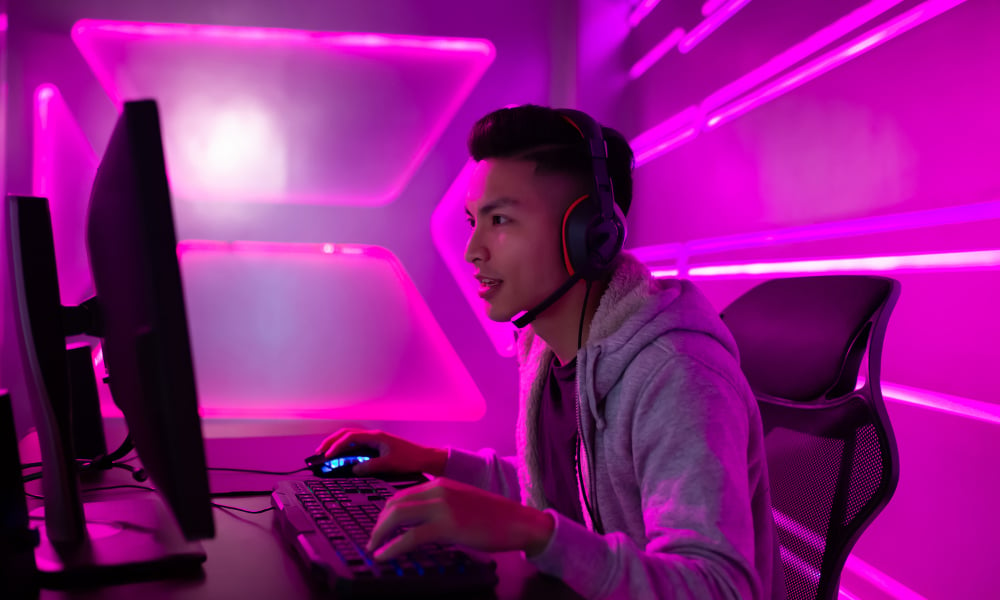
Consejos para elegir el mejor juego de mundo abierto para ti
Encuentra el juego de mundo abierto perfecto para tu estilo de juego con consejos sobre exploración, sistemas de progresión, accesibilidad y funciones inmersivas para juegos móviles.
Continúe Leyendo
Juegos de realidad virtual para entusiastas del deporte
Descubre los mejores juegos deportivos de realidad virtual para vivir experiencias activas e inmersivas que desafíen tus reflejos y habilidades.
Continúe Leyendo